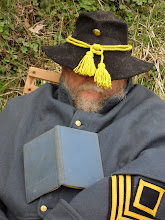From time to time, I'll be posting bits and pieces of works in progress. This one is from Chained Dogs:
On Heinzelmannchen
The Heinzelmannchen is a house spirit that oversees such things as household and barn cats properly controlling the local mouse population, the farm 's dogs keeping rabbits out of the garden and protecting the chicken coop, and keeping matches out of the hands of children. He is generally described as a small, fat man with brown or gray hair and may or may not have a beard. He accomplishes large amounts of work without appearing to seriously labor. He is generally friendly and very fond of beer (as one folklorist from Potsdam put it, "He's a damned Bavarian!"). He is one of the few such creatures to marry. The Heinzelfrau is a buxom female version of her spouse. Interestingly neither the Catholic nor Protestant Churches have taken a stand on the Heinzelmannchen.
Dr. Wolfgang Adalbert Murtz. Folklore of the Germanys: An exploration in rural belief. trans. Maria von Kurtz-Gunther. Munich: University Press, 1954. 397-398.
A number of characters in the Conrad Ritter cycle, of which Chained Dogs is a part, describe the sleuth from Upper Bavaria as a "Heinzelmannchen." (In my own case, a number of people, who should know better, have also referred to me as such.)
Review: (Note to FTC: I bought my own dang copy!)
Quest for Kim. Peter Hopkirk. Ann Arbor: University of Michigan Press, 1996.
Peter Hopkirk is one of the premier writers on the Great Game during the period of the Raj. For those unacquainted with this subject, this was the period roughly between 1830 and 1914 when Great Britain worried about Czarist Russia's encroachment on Central Asia. The fear that kept the lights burning late in White Hall and Simla (in the dry season) and Calcutta (in the rainy season) was that Russia would conquer Central Asia (the "Stans"), then conquer Afghanistan, build a railroad across them, and invade British India. The Great Game was the term for the intelligence war (a lukewarm one) played by both sides.
In his book, Quest for Kim, Hopkirk attempts to follow the path of Kipling's beloved hero ("protagonist" is much too weak a word for this adolescent) as depicted in Kim. He finds that while somethings, such as the people and the countryside are much the same, others such as the railroads and telecommunications have changed greatly. As a small example, in Lahore the gun, Zam-Zammah, on which we first meet Kim is still on its pedestal across from the "Wonder House," as the museum was called in the vernacular, to which Kim and the lama go (the lama to view the art treasures and Kim to eavesdrop). A fragment of the horse market where Kim takes the lama to meet Mahbub Ali, the Afghan horse dealer and master spy, still exists. On the other hand, Hopkirk discovers, in Pakistan, no one from president (or general) down to station master knows when the train leaves for the border or even if one runs there at all. Only one man in Lahore actually knows--the single ticket seller. This worthy is also able to tell Hopkirk why the phones in 1995 only ring but never answer in the Lahore railroad station--the phone bill wasn't paid by the railroad (a part of government) so service was turned off by the telecommunications system (also part of the government).
Quest for Kim is a wonderful mix of travel writing, history, and geography laced through with Hopkirk's general good humor. This is one Englishman who joins the mad dogs out in the noonday sun and provides great entertainment.
1 December 2009: Feast of St. Edmund Campion, actual bear Winnie the Pooh was named after by Milne donated to London Zoo 1919, opening day for Tundra Swan east of I 95 & south of Prince William/Stafford County lines.
Subscribe to:
Post Comments (Atom)




No comments:
Post a Comment